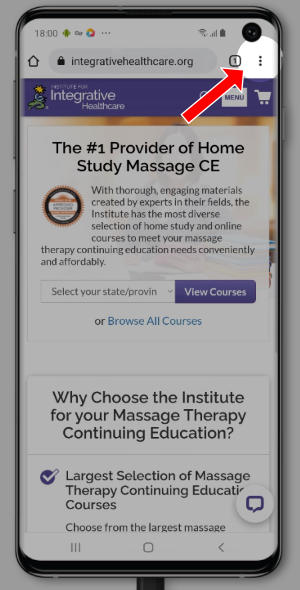 Want to earn continuing education credit for this article? Learn more.
Want to earn continuing education credit for this article? Learn more.
Athletes and those who treat their injuries are all too familiar with the surge of strains, sprains and tears associated with the first few weeks of athletic training. Common among runners, anterior shin splints are one of the most prominent early season injuries. Anterior shin splints can develop gradually over a period of weeks to months, or may occur after a single, excessive bout of exercise.
Definition
Often occurring bilaterally, anterior shin splints typically involve inflammation and/or small tears in the tibialis anterior muscle where it is attached to the tibia. The pain is usually noticeable when exercise begins, then decreases as exercise continues. Often experienced as a burning sensation, the pain worsens after exercise or the following morning.
Due to the tearing of muscle fibers away from the periosteal attachment, anterior shin splints manifest as bumps and tender areas on the anterior leg. As these fibers heal, they become fibrotic, making it difficult for the muscle to lengthen normally. The fibrotic patches weaken the muscle by restricting movement, perpetuating the probability of future shin splints. Additionally, untreated shin splints place the individual at a greater risk for developing stress fractures.
Cause
Since the tibialis anterior muscle controls the lowering of the foot upon heel strike, stressing this movement can increase chances of injury. Activities leaving individuals susceptible to anterior shin splints include:
- Beginning a running program
- Excessive downhill running
- Sports requiring rapid starts and stops
Additional conditions which can increase the chances for shin splints are:
- Running on hard surfaces, or wearing shoes without adequate shock absorption
- Over-pronated (flat) feet, which increase stress on the lower leg muscles
- High arched feet due to their inability to absorb shock
- Excessive jumping, which places disproportionate stress on the toes
Prevention
According to James Mally, ND, instructor of the Institute for Integrative Healthcare Studies’ Sports Massage continuing education program, “The best ways to avoid shin splints are to warm-up well; stretch; run on soft surfaces as much as possible; avoid major changes in training, and ice at the first sign of discomfort. Orthotics may be necessary if there is inadequate arch support.”
Special considerations
Bodyworkers may note an imbalance between the weaker anterior leg muscle group and the larger and stronger posterior group. Tightness of the posterior muscle group can further aggravate anterior shin splints.
Prior to working with sharp anterior leg pain, the bodyworker should rule out a tibial stress fracture. A positive test for a stress fracture is eliciting pain at the fracture site when placing a vibrating tuning fork directly on the tibia. Refrain from local massage and refer to a physician if a stress fracture is suspected.
Another condition that may mask itself as shin splints is compartment syndrome of the lower leg. Also induced by exercise, compartment syndrome involves swelling, pain, parathesia, and can ultimately decrease leg motor function. Also requiring a referral, compartment syndrome demands medical evaluation.
Treatment
Orthopedic specialists agree that the most important treatment for shin splints is rest. If the activity aggravating the tibialis anterior continues prior to the tissue healing, damage to the muscle will ensue. Additionally, directly icing the shin after activity will minimize tissue damage.
Massage is a valuable tool when recuperating from anterior shin splints. Bodywork can drastically reduce the tightened and fibrotic muscle tissue typical of this injury.
In the Institute’s Sports Massage continuing education course, Dr. Mally teaches two methods to decrease shin splint pain:
- In the supine position, slightly rotate the leg medially to provide better access to the tibialis anterior. Work your way up the tibialis anterior with the heel of your hand or with your proximal forearm.
- In the prone position, increase the tension on the tibialis anterior by bending the client’s knee and grasping their toes to plantar flex the client’s ankle. In this position, the therapist can maximize the depth of work on the tibialis anterior muscle.
In the August/September 2000 edition of Massage and Bodywork, Zhenya Kurashova Wine imparts information on Russian sports massage for running injuries. Wine clarifies the reasoning for the upward stroke direction when addressing anterior shin splints, “To reiterate, it is very important not to apply any downward pressure since this will increase the chance of edema, hemorrhage and possibly more tissue damage.”
Additionally, Wine suggests a conservative approach for anterior shin splints, by beginning massage on the posterior leg before progressing to the anterior leg. By massaging the muscle antagonist first, the injured area is flooded with circulation to prepare for direct manipulation.
Acupressure practitioners work two important points near the tibia to increase circulation for enhanced tibialis anterior healing:
- Stomach 36: Located four finger breadths below the eye of the knee, one finger breadth lateral to the anterior crest of the tibia, in the tibialis anterior.
- Spleen 9: On the lower border of the medial condyle of the tibia, in the depression on the medial border of the tibia.
Rehabilitation
Once the tibialis anterior muscle has healed, another step is necessary before engaging in the original offending activity. No different than any other sports related injury, the anterior leg muscles must be progressively stretched and strengthened to prevent re-injury. The key to successful rehabilitation is a gradual increase in its intensity.
A certified athletic trainer and strength and conditioning specialist, Benny Vaughn, LMT, suggests resistance exercises using rubber tubing or bands. Performing resistance exercises consisting of ankle dorsiflexion, plantar flexion, eversion and inversion can lengthen and strengthen the lower leg muscles, providing added insurance against future shin splints.
Review
Anterior shin splints are a common injury, with every sports training facility seeing its fair share of painful tibialis anterior muscles. The massage techniques discussed here will maximize a bodyworker’s role in reducing anterior shin splint pain and damage.
The number one reason for recurring shin splints is an athlete’s impatience with the healing process and the premature return to activity. Educating these clients about the how, what and why of their anterior shin splints will facilitate prevention, healing and rehabilitation, paving the way for their full recovery.
Earn continuing education credit for this article contained in our Common Sports Injuries series. Click here to enroll.











